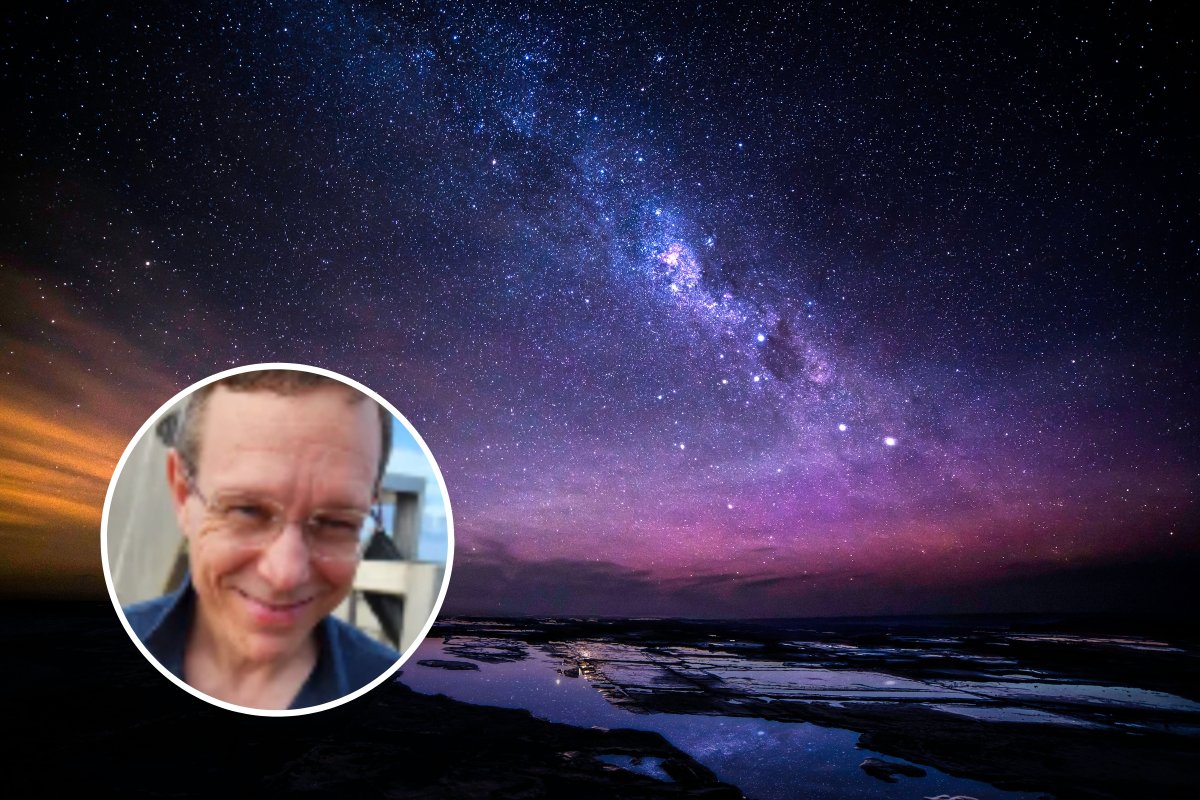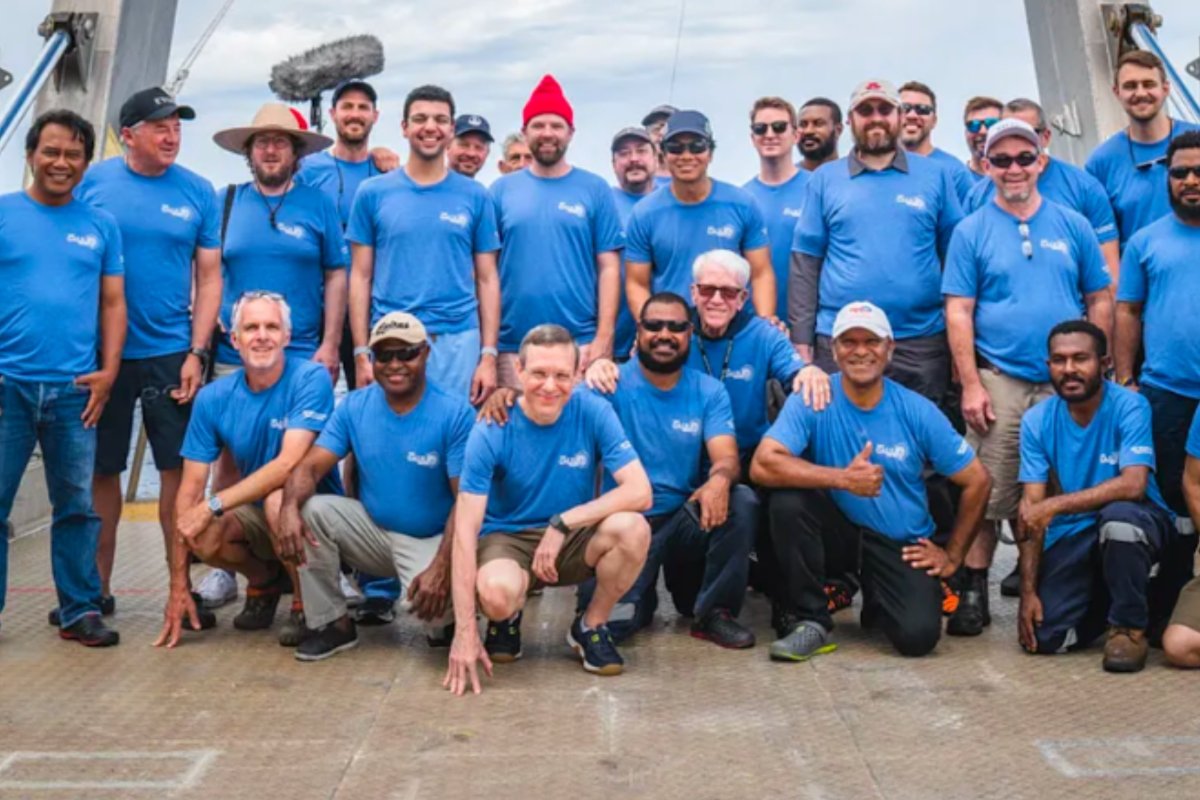We did it. I led a Galileo Project expedition to the Pacific Ocean to retrieve spherules of the first recognized interstellar meteor, IM1, and brought back to Harvard College Observatory more than 50 that lay on the deep ocean floor for nearly a decade.
These sub-millimeter-sized spheres, which appear under a microscope as beautiful metallic marbles, were concentrated along the expected path of IM1, about 85 kilometers off the coast of Manus Island in Papua New Guinea.
Their discovery opens a new frontier in astronomy, where what lay outside the solar system is studied through a microscope rather than a telescope. That 83 percent of the matter in the universe is apparently composed of dark matter which was not found yet in the solar system should teach us modesty in forecasting the nature of interstellar objects.

I believe that it is easier to seek extraterrestrial facts on the ocean floor than to get them from the government. The week before we left for the expedition, we were marked by news about a report by David Grusch who served as a representative to the Task Force on Unidentified Anomalous Phenomena (UAP) within the U.S. Department of Defense (DoD).
Grusch said that recoveries of extraterrestrial objects of non-human origin had been ongoing for decades by the U.S. Government, allies, and defense contractors. So far, Grusch's story is about hearsay and classified documents, but no physical evidence, images, or scientific data.
It is unclear whether we will ever see the evidence even if it exists, because I believe that the government is hiding it behind the veil of national security. In contrast to the storyline provided by Grusch, all scientific findings of the expedition under the umbrella of the Galileo Project that I lead will be open to the public.
It took us a few days on board the aluminum ship, which is fittingly called 'Silver Star', to get the magnetic sled on the ocean floor and a few more days to understand what we collected.
As we scooped the magnets, the most abundant material attached to them was a black powder of volcanic ash. It was everywhere, including the control regions far from IM1's site.
I was frustrated by this background to the extent that I titled one of my 34 diary reports: "Where are the spherules of IM1?"
And then came the breakthrough. After a week at sea, we used a filter with a mesh size of a third of a millimeter to sift through the tiny volcanic particles and examine the remaining larger particles under a microscope.
Shortly thereafter, the team's geologist Jeff Wynn came running down the stairs to tell me that the team's analyst Ryan Weed saw through the microscope a beautiful metallic marble of sub-millimeter size and sub-milligram mass.
I rushed up to the top level of our ship. When Ryan showed me the image, I asked him to place this spherule in the X-ray Fluorescence analyzer. He responded: "Sure, we can do it later." I hugged him, thrilled by the finding, and said: "Please do it right now." The composition analysis implied 84 percent iron plus trace elements.
I knew immediately that we would find many more spherules. When you find a single ant after surveying a small part of the kitchen, you know that there are many more ants out there. Sure enough, we found more spherules within a few hours.
The startling finding of IM1's spherules was enabled by a team of exceptional individuals, each representing the best of their profession. They complemented each other in harmony like members of a well-trained orchestra.
The discovery of spherules felt like a miracle. When the remarkable Rob MacCallum visited the porch of my home a year ago and suggested helping in coordinating the expedition, I never imagined a more successful operation.
The expedition required $1.5 million. A few months after mentioning our funding needs in various podcasts, my wish materialized through a Zoom call with the brilliant mathematician and entrepreneur Charles Hoskinson, who simply said: "You have the funding."
Charles joined us on the ship and helped in all aspects of the operation. In addition to enabling the expedition, he and his assistant J.J. Siler were a delightful addition to our research team and I resonated with all his views on all matters even though we never met before.

When I boarded his private jet, the pilot said: "Welcome onboard Professor Loeb." To which I replied: "Please call me Avi. I am just a curious farm boy. All other titles are unimportant."
I still find it mind-boggling that we managed to retrieve milligram-mass spherules of sub-millimeter size from a 2-kilometer depth in the Pacific Ocean using a meter-wide sled scanning a 10-kilometer-wide region. This accomplishment is testimony to the ingenuity and professional skills of all team members.
The critical feat of keeping the sled on the ocean floor was mastered by team members Rob Millsap and Art Wright, who demonstrated the 'art of being right' by following the ocean.
Based on the measured abundance of U238, Pb206, U235, and Pb207, I calculated that the two spherules from the meteor path (derived from Run 8 and Run 19) have an age of order the age of the universe (14 billion years) whereas the background spherule (found in Run 17 outside the DoD localization box) has an age of order the age of the solar system (a few billion years).
In the coming weeks, we will examine carefully any clue for the spherules being different from solar system materials. This will constitute independent evidence for the interstellar origin of IM1 in addition to its measured speed.
The expedition demonstrates how science should be done. Driven by raw curiosity and wonder, on a topic of great interest to the public, while seeking evidence to find the truth and finding it despite all odds after a heroic effort by a team of dedicated professionals.
More than two million readers followed my 34 diary reports from the expedition, and this led to an avalanche of positive emails.
There is no greater reward than reading these messages. But common sense should not be taken for granted. As a result of news reports about the interstellar expedition in the BBC, New Scientist and Forbes, I became aware of a new paper by Peter Brown and Jiri Borovicka, who argue that modeling IM1 as a familiar solar-system meteoroid does not fit the U.S. Government data on IM1's fireball unless its speed is reduced considerably, making the object bound to the Sun and not interstellar.
The argument is akin to an astronomer suggesting that data on the rotation curve of the Milky Way galaxy is invalid because it cannot be explained by types of matter found in the solar system. With the rationale that we should have seen the light emitted by any form of matter and therefore the data must be invalid, dark matter would have never been part of the vocabulary of cosmologists.
We often complain about politicians ignoring evidence that contradicts their narrative. Similarly, scientists should not dismiss data that violates their models. Reality stays whatever it is, irrespective of whether we choose to ignore it. In the long run, it is better to adapt to reality than to ignore it.

Ultimately, other people beyond Galileo Galilei would realize that the Earth is not at the center of the solar system, so there is no point in denying it. In fact, acknowledging Galileo's insight allowed humanity to design successful space missions.
Brown & Borovicka argue that the DoD data must be wrong because their model for solar system meteoroids is unable to reproduce the measured fireball properties at IM1's speed.
However, an open-minded approach would consider materials of different composition than solar system rocks, just because the first interstellar meteor could have originated from an environment very different from the solar system.
As it turns out, this argument was already made in a paper I that I published in The Astrophysical Journal Letters last year with Amir Siraj. Brown & Borovicka do not acknowledge this earlier paper or contrast their conclusions with it.
The new wrinkle in this debate is that by the time the Brown & Borovicka paper appeared, our expedition to the Pacific Ocean recovered spherules at the location of IM1's path.
We now know that the DoD localization is correct, casting doubt on their conclusions.
Brown & Borovicka argue: "While an iron interpretation is attractive, the modeling ... strongly argues against an iron object. This is because an iron would have much higher ablation coefficients than used in our modeling and even at low speeds such high mass loss rates would cause the fireball to be visible much earlier than is observed.
"The object would also have to be much larger than modeled, further increasing the difficulty in matching the light curve. Moreover, irons do not typically show flares but rather have smooth light curves as would be physically expected."
In my last class of the spring semester at Harvard University, I asked my students for advice on what to do if we find an extraterrestrial gadget. Half of the class recommended pressing buttons on it and the other half expressed caution.
When one of the students asked: "What would you do, Professor Loeb?", I replied: "I will bring it to a laboratory and study it before engaging with it."
We are starting to make plans for the next expedition in the spring of 2024. The spherules serve as romantic rose petals leading us to a partner, which in our case is a possible large relic of IM1.
Finding it will be of great value to reveal its natural or technological origin.
Throughout my career, I focused on theoretical astrophysics. I chose to lead this expedition because it addresses a fundamental question of great importance to the future of humanity: "Are we alone?"
This is not a philosophical question. A technological device might be lurking 2 kilometers under the ocean surface with the answer. If so, we shall find it!
Abraham (Avi) Loeb is the Frank B. Baird, Jr., Professor of Science at Harvard University and a bestselling author.
All views expressed in this article are the author's own.
Do you have a unique experience or personal story to share? Email the My Turn team at myturn@newsweek.com.
Uncommon Knowledge
Newsweek is committed to challenging conventional wisdom and finding connections in the search for common ground.
Newsweek is committed to challenging conventional wisdom and finding connections in the search for common ground.
About the writer
Abraham (Avi) Loeb is the Frank B. Baird, Jr., Professor of Science at Harvard University and a bestselling author.





